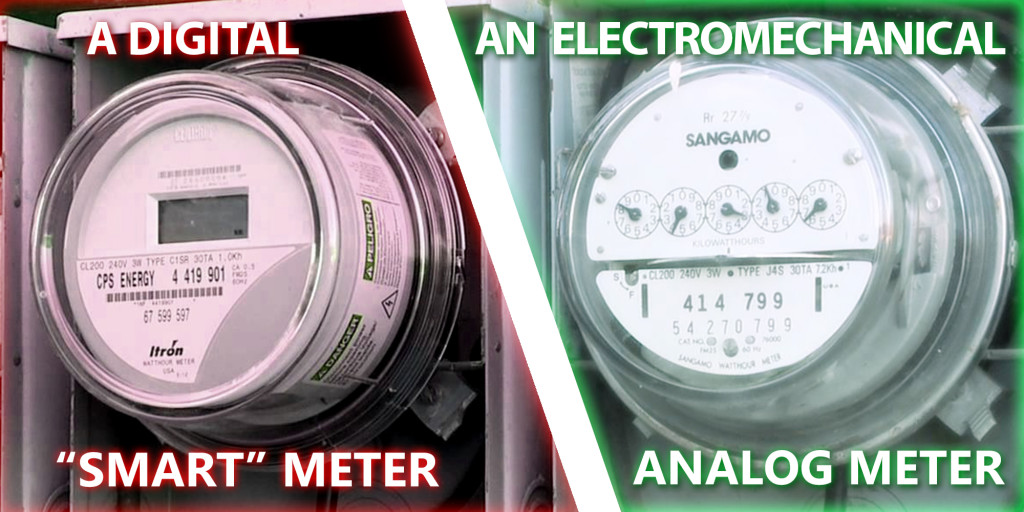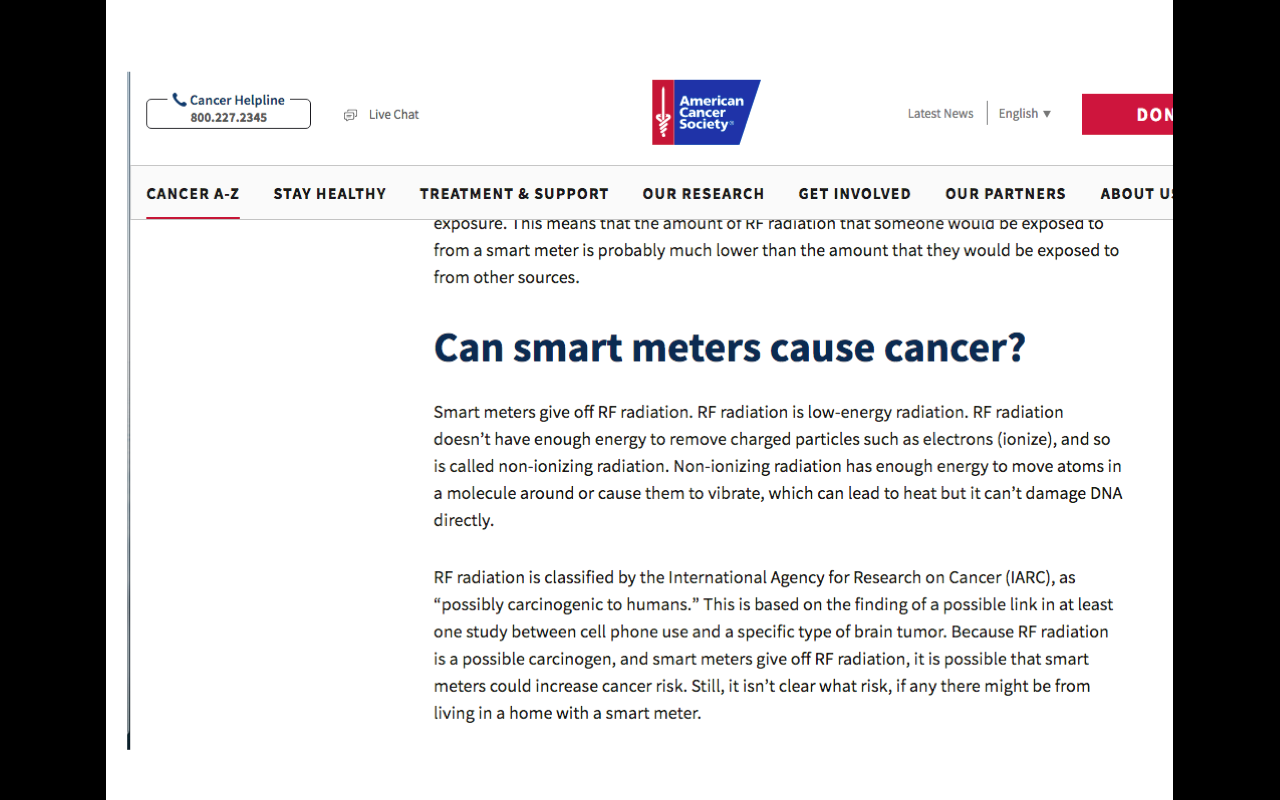 By B.N. Frank
By B.N. Frank
In June 2022, AEP Ohio came under heavy scrutiny for cutting power to allegedly a disproportionate number of low-income residents “to preserve the grid” during a weather emergency. According to the company website, the utility has already installed more than one million smart meters in customers’ homes and businesses. Research continues to expose that most “Smart” Meters are still NOT beneficial to consumers. Even AEP Ohio has admitted the company’s “advancements in technology” haven’t improved reliability.
From WOSU:
AEP wants regulators to lower reliability standards to allow for longer, more frequent outages
AEP Ohio is asking state regulators to lower their standards to allow for longer and more frequent power outage interruptions.
But consumer advocates representing manufacturers and residential electric customers, and staff at an Ohio regulatory agency are pushing back.
“We believe that the grid should be more reliable these days, not less reliable,” said Kim Bojko, chief energy counsel for the Ohio Manufacturers Association (OMA) and a partner at Carpenter, Lipps and Leland in Columbus.
Whenever the power fails for more than a few minutes, inconveniences and major disruptions plague households, businesses and public safety services, as demonstrated in the extended AEP Ohio outages over the summer in Central Ohio.
It caused spoiled medications, rotten food, heat exhaustion, profit loss and missed quotas at local manufacturing companies.
Every year Ohio’s electric users pay millions of dollars to utility companies in excess of the electricity they use to pay for infrastructure maintenance and improvements. For companies like AEP Ohio, that can add up to billions of dollars over the course of a decade or so to bolster the system.
Consumer advocates said that ought to translate into more stable electric service as time goes on, with shorter and less frequent outages.
Bojko said the company is worrying Ohio’s manufacturers by asking the state’s utility regulatory board to bring future thresholds below existing ones.
“We have concerns with lowering the minimum standards that would allow AEP they become less reliable without any repercussions for that lesser service,” she said.
The proposal is even more alarming after such an impactful outage in June hurt Central Ohio businesses.
“Manufacturers rely on energy every day to make their products to serve to the public. And when there are fluctuations or voltage drops or outages, it causes machines to shut down, it causes lost revenue, lost product,” she said.
To measure reliability standards, the PUCO calculates two figures.
One measures the average amount of time a power outage should last per customer. The figure is now nearly 150 minutes long, and AEP wants to adjust it to nearly 160 minutes.
The other figure calculates the number of outages a customer should experience in a year. It is at 1.18 outages per year on average, and AEP wants to raise it to 1.30.
“Instead of taking actions necessary to meet its performance standards, AEP Ohio proposes simply weakening or reducing the minimum performance standards,” state OMA documents filed in the proceeding.
Bojko said it would be the weakest since the metrics were created and it would be detrimental to Ohio’s businesses if the request is granted.
“It would allow an increase of 180,000 additional customer outages per year without negatively affecting AEP Ohio,” she said.
And, the OMA’s documents state it would add a cumulative of 88 years in outage minutes in Ohio.
If AEP misses the standards, they have to file detailed reports showing why. In its application to lower standards, the company claims advancements in technology have come, but it’s improved “efficiency and effectiveness,” not reliability.
AEP claims standards set in an older case “seemed achievable at the time,” but “they have proven to be too optimistic considering the company’s current system and challenges.”
And, the company claims their customer surveys “indicate that customers are generally happy with the reliability of their recent service,” so lower standards will likely be accepted.
Staff that work at the PUCO submitted a report calling AEP’s proposals “unreasonable.” Because the case is still open, no one was available for an interview.
The staff recommends the PUCO commissioners approve standards that improve upon past metrics, reducing the average time of outages per customer to under 140 minutes and bringing the frequencies of the outages closer to just one a year, or 1.16 outage per year.
The staff report found AEP isn’t accounting for promises they made when they requested new programs, that customers pay for, meant to advance reliability.
The manufacturers association said if AEP gets what they want, it will create a “a feedback loop of ever-diminishing standards” that will decrease reliability and sabotage Ohio’s burgeoning high-tech manufacturing industry.
Bojko and advocates representing residential customers in the state said the PUCO should reject AEP’s proposals and open a formal investigation with an independent auditor into the June outage to get answers about the reliability of the company’s service.
“Thousands of consumers have suffered physically and economically when their AEP electric service was disrupted in June, during some of the hottest days of the year. But the PUCO hasn’t opened a case to investigate the AEP outages. That’s dismaying,” said Andrew Tinkham is program specialist with the utility watchdog the Ohio Consumers’ Counsel (OCC).
The outage began with downed lines when several storms blew through Central Ohio, and continued with forced outages that AEP said it made to prevent other parts of the grid from overloading during a few days of extreme heat.
While AEP wouldn’t comment for this story, it argues in a PUCO proceeding that its response to the outage was “Herculean” and the forced outages were necessary. They argue the PUCO’s staff review is sufficient and that a case meant to set the standards for their reliability metrics isn’t the place to meddle with the PUCO’s response to the outage.
Consumer advocates argue the outages are relevant and should impact the reliability standards the company is held to. They argue in documents in the proceeding that AEP’s customers deserve a transparent process and a formal investigation would allow for public comments, public hearings and force AEP to hand over documents they’ve requested and the company is fighting to hold onto.
“We’re trying to get answers from AEP and a PUCO case that happens to be pending about AEP service reliability but AEP won’t answer our questions and it’s frustrating,” Tinkham said.
An investigation could offer more details about why the outages occurred, and lead to improvements and better preparation in the future, the OMA and OCC argue. And, the Ohio Manufacturers Association wants to see communication with consumers during the outage investigated for improvement.
Some members of the manufacturers association “received a communication stating that they may be required to curtail later over the next few days prior to the June 2022 outages.“However, hours later as AEP Ohio’s system began to fail, these manufacturers did not receive notification or a request from AEP Ohio to curtail load,” Ohio Manufacturers Association documents state.
The manufacturers may have been able voluntarily to reduce electric use in order to avoid the outages, OMA states. That should also be investigated, the association argues.
“There are a lot of customers of AEP that have resources behind the meter. And those resources could have been taken offline or put online, depending on the issue in order to help with stability of the system,” Bojko said.
Renee Fox is a reporter for 89.7 NPR News. Fox joined the WOSU newsroom from the Tribune Chronicle/Vindicator in the Youngstown area, where she’d been a reporter since 2014. Contact Renee at renee.fox@wosu.org.
“Smart” Meters (electric, gas, and water) allow utilities to remotely control consumers’ utility use as well as collect consumer usage data and sell it to 3rd parties including police departments. Obviously utilities continue to promote them as beneficial to consumers and integral for “energy efficiency” even though reports continue to prove THEY AREN’T. Adding insult to injury, the cost for their installation, maintenance, operation, and replacement is often passed on to consumers.
Additional issues associated with “Smart” Meters include fires and explosions (see 1, 2, 3, 4), harmful radiation emissions, mechanical issues, and ridiculous technical mishaps. Worldwide opposition to “Smart” Meters has been ongoing since utilities first started deploying over a decade ago.
Of course, “Smart” thermostats are now also being promoted by utility companies as being beneficial to consumers and essential to “energy efficiency”. “Smart” thermostats allow utility companies to remotely control consumers’ energy use as well and this has already led to hazardous situations (see 1, 2). Last month, one study stated that smart thermostats provide a tiny bit of energy savings whereas another study revealed the exact opposite. Additionally, research has exposed that smart thermostats could be damaging power grids. As if American power grids weren’t already vulnerable enough (see 1, 2, 3, 4, 5, 6, 7, 8)…
Activist Post reports regularly about “Smart” Meters and other privacy invasive and unsafe technology. For more information, visit our archives and the following websites:
- Wireless Information Network
- StopSmartMeters.org
- Smart Meter Harm
- Smart Grid Awareness
- Smart Meter News
- Coalition to Stop Smart Meters
- Physicians for Safe Technology
- Environmental Health Trust
- EMF Safety Network
- Take Back Your Power
- The People’s Initiative
- Americans for Responsible Technology
Become a Patron!
Or support us at SubscribeStar
Donate cryptocurrency HERE
Subscribe to Activist Post for truth, peace, and freedom news. Follow us on SoMee, Telegram, HIVE, Flote, Minds, MeWe, Twitter, Gab, What Really Happened and GETTR.
Provide, Protect and Profit from what’s coming! Get a free issue of Counter Markets today.


Be the first to comment on "Utility Says “advancements in technology” Haven’t Improved Reliability; Asks Regulators “for longer and more frequent power outage interruptions”"